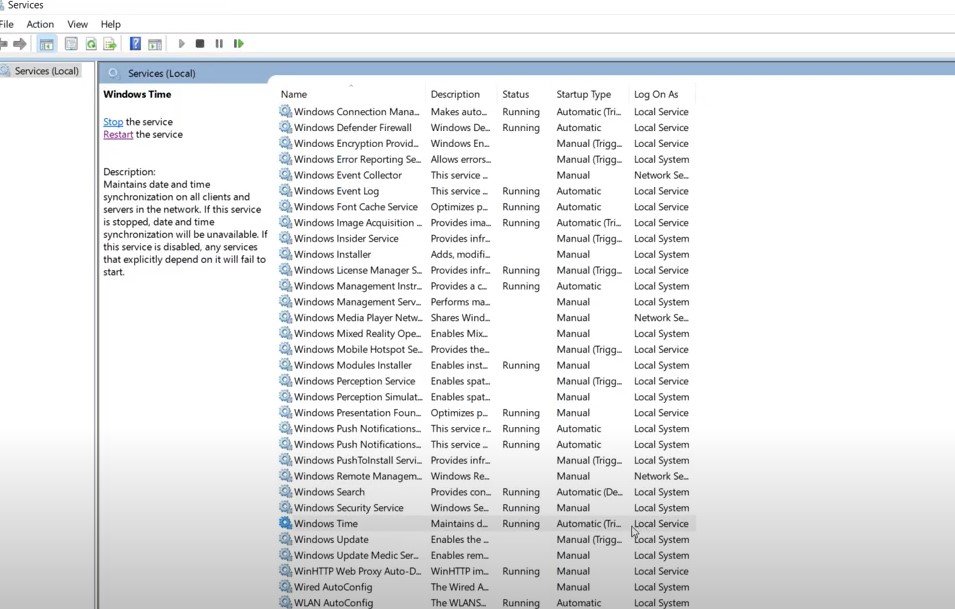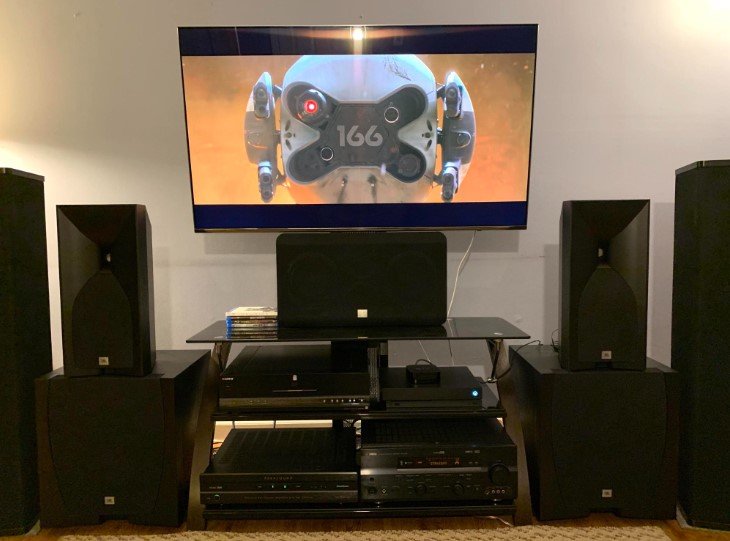SYNC Timing Synchronization Failure Loss Of SYNC (Causes & Fixed)
A SYNC Timing Synchronization Failure Loss Of SYNC can mess up network performance and system efficiency. These are problems of synchronization that occur whenever a device loses time, which can cause anything from a lag in communication to actual loss of data to a complete disconnect. This article will discuss the reasons for SYNC timing synchronization causes and how to resolve these problems.
SYNC Timing Synchronization Failure Loss Of SYNC
SYNC timing synchronization failure, or Loss of SYNC, is a failure that occurs in a network when the devices lose their timing coordination. This could result in a major loss of performance, like:
- The delays in communication
- The loss of data
- The entire system was disconnected

Modem Disconnects SYNC Timing Synchronization Failure – Failed To Acquire QAM/QPSK Symbol Timing
SYNC timing synchronization failure is usually a common reason for modems disconnecting. Frequently or failure to sustain a stable internet connection. This has to do with the failed acquisition of QAM/QPSK symbol timing more specifically; that is failure to achieve the proper symbol timing for Quadrature Amplitude Modulation (QAM) and Quadrature Phase Shift Keying (QPSK) which are essential for any digital transmission.
Locking into any other this timing thus leads to intermittent loss of a network connection, low internet speeds, or even total inability to communicate at times.
What Causes Synchronization Failure?
Common Causes of SYNC Timing Synchronization Failure;
- Hardware Malfunctions: Bad parts like clocks or boards, can send the wrong timing signals.
- Clock Drift: Devices with different clock speeds will eventually fall out of sync.
- Signal Interference: External factors, like electromagnetic interference, can distort timing signals.
- Configuration Errors: Incorrect settings in device configurations can prevent proper synchronization.
- Network Congestion: Traffic is heavy, and that causes delays in the transmission of the signal, which leads to problems with timing.
SYNC Timing Synchronization Failure And Different No Response Received Messages
The network connectivity problems that occur with the messages that read no response received as long as SYNC timing synchronization errors can be noticed. These issues could make the Internet slow down; it might become disconnected even before it is completely lost.
Common No Response Received Messages
- Request Timed Out: This means that the machine didn’t get an answer in a certain amount of time which is usually some synchronization problem.
- Destination Host Unreachable: This implies that the machine is unable to contact the desired host, perhaps due to a fault in the network setup.
Connection Refused: That means that the target is not accepting connections, when it can’t sync right it does that. - Network Unreachable: This message indicates a much larger problem in the network, which can result from SYNC timing errors.
How To Fix Sync Timing Synchronization Failure?
Effective Solutions to Fix SYNC Timing Synchronization Failures
- Check Hardware: Inspect and replace any faulty hardware components.
- Synchronize Clocks: Use network time protocol (NTP), to keep all machines synchronized.
- Reduce Interference: Track down and eliminate electromagnetic interference around you.
- Review Configurations: Ensure all device settings are correctly configured for synchronization.
- Monitor Network Traffic: Monitor traffic and potential congestion, using network management tools.
You can eliminate SYNC timing synchronization failures by knowing the causes and making these corrections, a stable and efficient network.
SYNC Timing Synchronization Failure: Loss of SYNC & RCS Partial Service
SYNC Timing Synchronization Failure – Loss of Sync errors can cause major network problems, which often show up as a Loss of SYNC and RCS (Remote Control System) Partial Service messages. These are signs of a terminal to keep sync the quality-of-service drops and the connection is lost.
- Loss of SYNC: When a modem or network box loses synchronization with the network. it stops the service temporarily.
- RCS Partial Service: This states that even though the modem is connected it can’t quite talk to the network. Because of some trouble with the synchronization which in turn limits the available services.

CM1000 SYNC Timing Synchronization Failure
The CM1000 modem (which is a high-speed modem) can occasionally have a SYNC timing synchronization failure. The only problem is that the modem doesn’t sync correctly with the network, which in turn causes connection problems and loss of service.
Causes of the Issue
- A weak or noisy signal makes it impossible to synchronize properly.
- The performance of your modem may be affected, by using low-quality or damaged coaxial cables.
- Interference can be caused, by various nearby electrical devices.
- Sometimes the synchronization process might not be possible if using outdated software versions.
- This problem is mostly experienced due to irregularities in the ISP.
Troubleshooting Steps
- If you have a problem with your internet connection first check whether you are receiving a signal or not using your modem interface; contact ISP if it’s low.
- Ensure all cables have enough connection; the cables themselves are strong enough.
- Try to keep the modem apart from other electronics.
If the above steps are not successful. Contact your service provider.
Loss Of Sync In Event Log (SBG10)
You know your SBG10 modem/router lost Internet connection when you see “Loss of Sync” in its event log. You will experience interruptions in your device’s connectivity and reduced functionality as a problem.
Common Causes
- Inconsistencies with the signal: Poor signal strength or too much noise can cause bad synchronization.
- Issues with the cable: The signal can be affected when you use poor quality. Coax cables or damaged ones.
- Interferers include other electronic devices among other physical barriers that are blocking your signal
- Faulty firmware: Obsolete firmware may result in loss of synchronization and poor performance.
- Service provider problems: The network disruption from your service provider may have an impact on synchronization.
How to solve it?
- Examine Signal Strength: Inspect the strength of these signals by logging in through your modem; alert your ISP if they are too weak.
- Assess Cable Connections: Ensure all cables, coaxial or Ethernet, are firmly plugged into the modem.
- Avoid Interference: Locate your modem far from other electronic devices and objects that can obstruct signals.
CAX30 Timing Synchronization Failure – Loss Of Sync
When CAX30 loses time synchronization, it means that this specific type of modem cannot synchronize correctly with ISP network time because of such problems as poor signal quality, cable disruptions, and configuration errors which can derive from other things too; since then, it has loss of sync. And this turns into frequent disconnections, low internet speed, and breaks between.

Causes
- Signal Issues
- Cable Problems
- Interference
- Firmware Problems
- ISP Issues
Troubleshooting Steps
- Check Signal Strength
- Inspect Cables
- Minimize Interference
- Update Firmware
- Contact ISP
Netgear ORBI CBR750 Wifi6 Router With Cable Modem Frequently Drops The Internet?
If your internet connection frequently cuts off with your Netgear ORBI CBR750 Wifi6 router that operates as a cable modem. Follow these instructions.
- Reboot: Remove the power cord and the coaxial cable from the modem for not less than thirty seconds, hit the tip of a coax port, and reconnect by starting with the coax.
- Trying another modem: You can also opt to replace your modem if none seems successful.
- To plan a technician: Plan a technician for a signal diagnosis session.
These are steps for enabling or disabling WIFI 6 Features on your Netgear router.
- Launch a web browser using a device is connected to your router’s network.
- Type in www.routerlogin.net.
- Fill in your username or password.
- Click on Wireless.
- Uncheck Enable AX to get rid of WIFI 6 under the Wireless option or check off to switch it on again.
Conclusion
To sum up, SYNC Timing Synchronization Failure Loss Of SYNC, results in major disturbances in network performance due to e.g. communication delays, loss of data, or system disconnection caused by SYNC timing synchronization failures i.e., Loss of SYNC.
Generally, such problems occur, hardware malfunctioning, clock drifting, signal interference, or wrong configurations. Some modems and devices cannot get the correct symbol timing necessary for digital transmissions such as QAM/QPSK which might cause intermittent disconnection or low speed of the internet.
People Also Ask
How does clock drift affect SYNC timing synchronization?
SYNC timing synchronization is affected by clock drifting. Clock drift refers to a device falling out of sync. The variance in speeds at which devices connected to a network operate. This disparity interferes with communication thus leading to dissatisfaction of SYNC timing between the devices.
What is QAM/QPSK symbol timing, and why is it important?
Quadrature Amplitude Modulation (QAM) and Quadrature Phase Shift Keying (QPSK) are two modulation schemes used in digital communication systems. Correctly timed symbols ensure the correct transmission of data, a problem in this process can lead to network disconnections and other SYNC issues.
Can electromagnetic interference cause Loss of SYNC?
Yes, because electromagnetic interference from other nearby devices can alter the timing pulses, the devices will not stay in sync. SYNC failures can be avoided with less interference near the modems and routers.
How exactly does “Request Timed Out” apply to the SYNC failures?
Request Time Out” is a statement that means that a piece of equipment did not get an answer in the time should have, this usually happens because of SYNC timing errors where the communication is either slowed down or interrupted.
When I have SYNC timing problems, why does it say “Network Unreachable”?
Network Unreachable” means that the problem is a lot more serious than that, a SYNC timing failure, or something, the device just can’t reach the network, usually because there’s a bad signal or a hardware problem.






